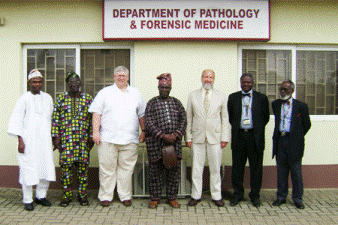Natural Resources, School of

Karl Reinhard Publications
Document Type
Article
Date of this Version
2018
Citation
International Journal of Paleopathology 22 (2018), pp. 39–44.
doi: 10.1016/j.ijpp.2018.03.005
Abstract
Russia, both as the USSR and the Russian federation, provided a source of parasitological theory for decades. A key figure in Russian parasitology was Yevgeny Pavlovsky. He developed the nidus concept, the conceptual basis for the field of pathoecology. He also coined the term “paleoparasitology.” Pathoecology is a foundation concept in archaeological parasitology. Paleoparasitology, as defined by Pavlovsky, is an avenue for understanding of host parasite evolution over very long time periods. These contributions are not fully recognized internationally. Similarly, the long history of Russian paleontological and archaeological investigations are not fully known. Most recently, discoveries from archaeological sites show that a pattern of zoonotic infection prevailed among archaeological populations in central Russia. This included a case of apparent host switching of beef tapeworm infection to reindeer. This latter discovery raises the possibility that archaeological parasitology can contribute to the new Stockholm Paradigm of ecological fitting, host switching, and emergent disease. This review covers all of the parasitological discoveries from ancient Russia and illustrates how Russian models and discoveries defined parasitological theory in the past and present.
Included in
Archaeological Anthropology Commons, Ecology and Evolutionary Biology Commons, Environmental Public Health Commons, Other Public Health Commons, Parasitology Commons


Comments
Copyright © 2018 Elsevier, Inc. Used by permission.